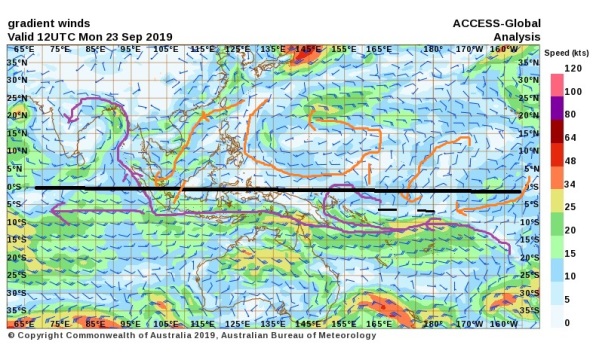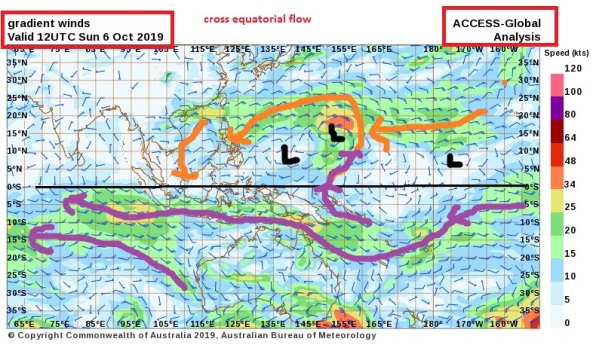Winds don’t always stay in the same hemisphere . They do cross over in places across the equator 0 deg latitude.In both directions
I am starting this topic thread to investigate the flow of major wind streams from the Southern Hemisphere: SH and into the Northern hemisphere: NH and vice versa ….in all seasons if l have the time.
I will capture the wind streams using ACCESS G model by BOM Australia
Greater Asia View because l am interested in the flow over Australia and across the equator
Here is my first snap below. 8th September 2019. The first week of the Australian spring.
Notice how the winds from the southern cooler latitudes are conveyed up to the warmer northern mid , sub tropical and tropical latitudes.
You can see the importance of the high pressure cells , in particular the eastern flank, in transporting the cooler surface air to cool down the north latitudes.
The flow doesn’t stop here but continues into the NH in possible favorite more common spots along the equatorial line.

EQUINOX.. 23rd September 2019
There has been a significant change in direction of the NH wind streams this week. The major stream down past Korea is on its way to the SH equator and some minor cross equatorial flow in the mid pacific atm


Please go down to the comments section below for all further entries. Click on the heading to load if necessary.



